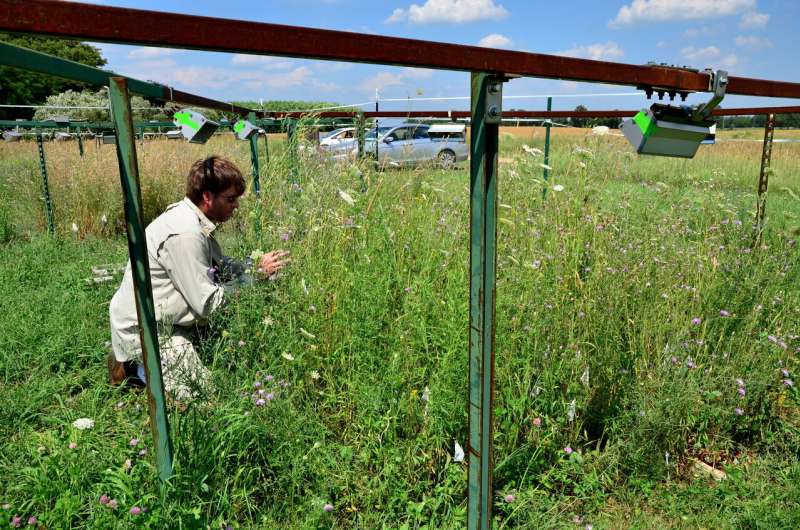Native plant species may be at greater risk from climate change than non-natives

As spring advances across the Midwest, a new study looking at blooming flowers suggests that non-native plants might outlast native plants in the region due to climate change.
The study—led by researchers at Indiana University's Environmental Resilience Institute, part of IU's Prepared for Environmental Change Grand Challenge initiative, and Michigan State University—has revealed that warming temperatures affect native and non-native flowering plants differently, which could change the look of local landscapes over time.
The study was published May 28 in the journal Ecology Letters.
"The timing of a plant's life cycle is crucial for species survival," said study co-author Jen Lau, an associate professor in the IU Bloomington College of Arts and Sciences' Department of Biology and a member of the Environmental Resilience Institute. "When a plant flowers determines whether it will be pollinated by bees or other insects and how much time it will have to produce seeds. Our data makes me worry that we will have a very weedy world in our future."
The researchers' findings suggest non-native plant species may be better at shifting their flowering time compared to native plant species. These differences are thought to influence a species' success both now and in future warmer environments.
To test this hypothesis, Lau and her students simulated global warming in fields planted with 45 native and non-native species. Some areas were warmed by infrared heaters, while other areas were not. Lau's lab surveyed all plants to determine when they first flowered and how long they flowered.
When grown in warmed plots simulating the climate change expected in the Midwest by the end of the century, the researchers found that non-native species flowered more than 11 days earlier on average. In contrast, native species did not shift flowering times at all when warmed.

"We also found that earlier-flowering non-native species had greater geographic spread, suggesting that flowering earlier may help promote successful establishment across large areas," said the study's lead author Meredith Zettlemoyer, a Ph.D. student at Michigan State University, where Lau was previously on faculty.
The findings suggest important differences in how native and non-native plant species' respond to climate change. Because other studies have shown that species which failed to shift their flowering times over the past century were more likely to decline in abundance or go extinct, native species may be more susceptible to climate change than non-natives species.
"Species across the globe are showing us that the climate is changing in ways that affect them," Lau said. "Flowering earlier in the spring is a big sign that the climate is changing and may be a key strategy for surviving climate change. Maybe the native species that aren't very good at blooming earlier under warmer temperatures possess other strategies for surviving climate change, but if they don't, they could be in serious danger."
This study was funded by the National Science Foundation and conducted at Michigan State University's Kellogg Biological Station Long-Term Ecological Research Program, which studies the ecology of intensive field crop ecosystems as part of a national network of Long-Term Ecological Research sites established by the NSF.
Prepared for Environmental Change
The Environmental Resilience Institute, founded as part of Indiana University's Prepared for Environmental Change Grand Challenge initiative, brings together a broad, bipartisan coalition of government, business, nonprofit and community leaders to help Indiana better prepare for the challenges that environmental changes bring to our economy, health and livelihood. Announced in May 2017, Prepared for Environmental Change is working to deliver tailored and actionable solutions to communities across the state of Indiana.
What others are saying
"In this study, native plants were unresponsive to climate warming, whereas non-native species shifted their flowering earlier," said Colette St. Mary, a program director for Long-Term Ecological Research at the NSF. "Non-natives may gain an advantage as climate change proceeds."
More information: Meredith A. Zettlemoyer et al, Phenology in a warming world: differences between native and non‐native plant species, Ecology Letters (2019). DOI: 10.1111/ele.13290
Journal information: Ecology Letters
Provided by Indiana University



















